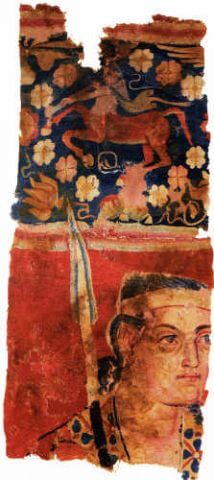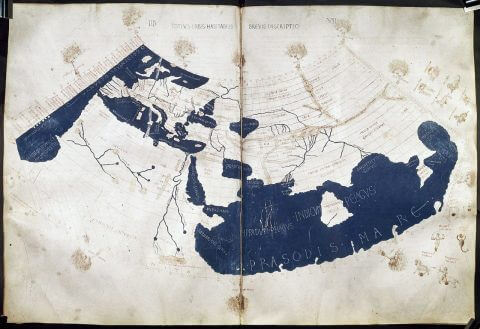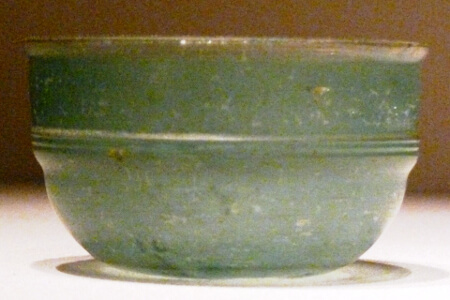Han Dynasty China and the Roman Empire – What’s the Story?
This is a short introductory article about contact between Rome and China in the period 350 BC – 220 AD. This is not by any means an exhaustive article. It is meant as a starting point to discuss an interesting historical topic during what was a very important period in both Chinese and European history.

To properly understand early Sino-Roman contact we have to look way back, to the time of Alexander the Great in ancient Greece.
Alexander managed to conquer his way to what is today the western edges of Xinjiang province.
That being said, Alexander himself most likely did not know about China.
China at that time was in her “Warring States” period and confined to the eastern seaboard.
The western-most of the warring states in China was the Qin which stretched roughly to where the city of Lanzhou in Gansu province is today.
In other words, there was about 2,500km between the Greeks and the Qin.
However, some archeological excavations in Gansu province have yielded items of European origin.
This does not necessarily mean there was contact, but suggests that some form of direct or indirect trade was present.
Some 200 years later, in Europe, the Greeks were replaced by the Romans. In China, the warring states had ended with the Qin dynasty victorious.
However, the Qin dynasty did not last long and was quickly followed by the Han dynasty.
In 130 BC the Han court established embassies in Central Asia to create closer links with the civilizations of Ferghana, Bactria, and Parthia. Some embassies even went as far as modern day Syria.

4 Classic Chinese Novels 📚 Discover The 四大名著
Chinese Novels you just have to know (known as 四大名著) | When we speak of Chinese literature or Chinese novels we cannot help but refer to the great classics.
In 97 AD the Han wanted to send an embassy to Rome, but they were dissuaded by the state of Parthia.
The intermediate states between Rome and the Han are likely part of the reason why there was not more direct contact between China and Rome.
As the facilitators of trade between the two main empires, these states had a lot to gain to keep China and Rome from having close, direct contact as the wealth gained from being a trade hub must have been massive.
Even 3rd-century Chinese sources mention Rome’s wish to have contact with China, but Parthia (called Anxi in China) would not let them through.
The Geography – Han China and The Roman Empire
In Roman sources, there are references to a land, or a people called the “Seres”, this is most likely a reference to Northern China or the part of China which could be reached through the overland silk route.

This is opposed to “Sinae” which was southern China, or the parts of China which could be reached by sea. Contemporary Roman sources seem to be equal parts in awe of, and in fear of the silk-producing people from the East.
It is important to note, that some scholars consider the Seres to refer to Central Asian people and lands, and not China.

10 Best Mandarin Movies of All Time (2025 Update)
Discover the Best Mandarin Movies. In a world of endless superhero movies and repetetive reboots, it’s time to try something new. Let’s delve into the world of Mandarin language movies.
Trade – Han China and The Roman Empire
Chinese trade had an important role in Roman politics, as Chinese silk was very popular, so much so that concern was raised on whether too much money was being spent on trade to bring silk in, or if using silk was even morally right!

For being interested in China and Chinese silk, the Romans did not know exactly where China was, or how big China was.
Early cartographers showed China spread all over Asia, and into Africa.
However, Pomponius Mela, considered to be the first Roman cartographer managed to locate China fairly accurately around 45AD around India.
An area where the Han dynasty had expanded to.
Later cartographers were even more accurate, Ptolemy managed to map out the Silk Route and managed to pinpoint China.
This shows that information was making its way to Rome, although the exact source of this information is uncertain. It is not unlikely that the Chinese were coming to Rome. Some Chinese sources also cite Roman embassies having arrived in China.
Wrapping Up – Han China and the Roman Empire

To sum up, due to trade, and close proximity to each other in Central Asia, Han Dynasty China, and Rome were aware of each other at some level.
Silk was very popular with Roman elites, and Greco Roman artefacts have been found as far east as Gansu and Guangxi.
However, the amount and exact nature of direct contact between Han China and Rome is still unknown.
Contemporary sources are few and unreliable.
Central Asian states also had a vested interest in keeping these two empires ignorant of each other.

Things That Shocked Me About China
Culture Shock in China can happen to anyone at any time, and it affects everyone differently. China, however, is in a whole different league. We explain why.
Sources and further reading – Han China and The Roman Empire
Websites
- https://www.ajaonline.org/sites/default/files/AJA1133_Sun.pdf
- https://www.cs.mcgill.ca/~rwest/wikispeedia/wpcd/wp/s/Sino-Roman_relations.htm
- http://sino-platonic.org/complete/spp261_Roman_Chinese.pdf
- http://www.roughdiplomacy.com/?p=8498
- https://www.smithsonianmag.com/smart-news/how-third-century-china-saw-rome-a-land-ruled-by-minor-kings-3386550/
Books
Hill, John E. (2009). Through the Jade Gate to Rome: A Study of the Silk Routes during the Later Han Dynasty, First to Second Centuries CE. BookSurge. ISBN 978-1-4392-2134-1.
Han China and the Roman Empire – FAQ’s
Did Chinese trade have an important role in Roman politics?
In short, Chinese trade did indeed have an important role in Roman politics, as Chinese silk was very popular, so much so that concern was raised on whether too much money was being spent on trade to bring silk in, or if using silk was even morally right!
Were Han China and the Roman Empire aware of each other?
Simply put, due to trade, and close proximity to each other in Central Asia, Han Dynasty China, and Rome were aware of each other at some level.
Are there any good books for learning more about Han China and the Roman empire?
A particularly good one would be…
Hill, John E. (2009). Through the Jade Gate to Rome: A Study of the Silk Routes during the Later Han Dynasty, First to Second Centuries CE. BookSurge.
ISBN 978-1-4392-2134-1.
Want more from LTL
If you wish to hear more from LTL Mandarin School why not join our mailing list.
We give plenty of handy information on learning Chinese, useful apps to learn the language and everything going on at our LTL schools! Sign up below and become part of our ever-growing community!


 Hi, my name is Mojca! I am from Slovenia and I work as a student advisor at our Shanghai school.
Hi, my name is Mojca! I am from Slovenia and I work as a student advisor at our Shanghai school.






11 comments
[…] includes Han (202BC-220AD), Northern Qi (550-574), Sui (589-618), and Ming (1369-1644). During these years, the […]
[…] International Women’s Day is fast approaching, so we thought this was a good opportunity to talk about some of the famous women from Chinese history. […]
[…] most people think of China, they just think of Han Chinese culture, as this is the most prevalent. However, China’s many ethnic minorities all have […]
[…] case you didn’t know the Han Dynasty was marked by many technological […]
Cool history lesson, didn't know much about this
Thanks Fred!
[…] Chinese have been enjoying noodles for around 2,000 years, ever since the Han dynasty (206 BC – 220 AD). Many experts believe that pasta actually has its origins in noodles and […]
[…] Chinese history is broken up into dynasties starting with the Xia dynasty in 2070 […]
[…] up 2% of the Taiwan population. They are the indigenous inhabitants of Taiwan, years before the Han Chinese arrived in the 17th century. The Gaoshan people “admire the full moon”. Gaoshan […]
[…] 2% of the Taiwan population. They are the indigenous inhabitants of Taiwan, years before the Han Chinese arrived in the 17th century. The Gaoshan people “admire the full […]
[…] The qipao also shares some similarities with a long one-piece dress which was popular with women during the Han dynasty. […]